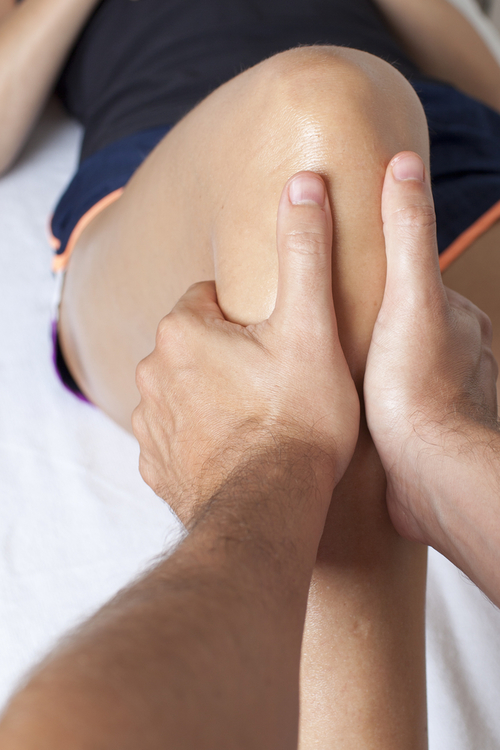How to reduce your knee pain without surgery
If you have ever heard a pop when you twisted your knee and then your knee swelled, chances are you ended up with surgical repair of a torn meniscus or ligament in the knee. There are some serious cut-and-dry cases when surgery is the only option. However, what if your knee is sore but there was no pop and no swelling, and it just hurts after walking or exercise?
First of all, you need to discover the cause of the pain. The start of any good diagnosis is a careful history and physical exam. If it's not improving, X-rays and especially a high-field, high-quality MRI add significantly to the accuracy of the diagnosis. (Pro athletes get MRIs for every ache and pain.)
If the diagnosis is a minor injury to the ligaments or soft tissues, you won't need surgery but there is a lot that can be done. Nonoperative care of knee joint injuries has vastly improved over the past 10 years and the thinking has changed in a number of key areas.
 The first focus of treatment is gentle soft-tissue manipulation. Soft-tissue physical therapy has advanced considerably from the old days of ultrasound and massage. Specific tissue mobilizations dramatically improve range of motion and healing of injuries all over the body.
The first focus of treatment is gentle soft-tissue manipulation. Soft-tissue physical therapy has advanced considerably from the old days of ultrasound and massage. Specific tissue mobilizations dramatically improve range of motion and healing of injuries all over the body.
The way this manipulation works is that collagen cells that make up our connective tissue have mechanoreceptors, or fine hairlike projections, that when stimulated release enzymes that both break down damaged tissue and stimulate new collagen (repair tissue) formation.
So rather than have the body form a scar, we want to stimulate it along the natural lines of stress to form strong, normal repair tissue. The massage also gets rid of the swelling. Swelling stretches out the tissues and slows healing.
ICE (ice-compression-elevation) is still a favorite method of reducing pain and swelling. However, there are now technologically advanced devices, such as the Game Ready units, that can improve on this by providing both cyclic pneumatic pressure and ice simultaneously.
Meanwhile the R (rest) from RICE has been dropped. Total rest is banned and exercise is now encouraged. We promote relative rest, which includes vigorous exercise of most of the body while protecting the injured joint. Pool exercises, Pilates, yoga, weight training while lying supine, healthy-leg bike spinning are all great techniques for working out hard while protecting a single joint. The exercise stimulates the natural endorphins, adrenaline, testosterone and pheromones that promote healing and wellbeing.
Finally, injured tissues can also be stimulated to repair by a treatment of injecting growth factors called PRP, made from your own peripheral blood platelets. A little of your blood is spun to concentrate the platelets and release the growth factors. The concentrated factors are then injected into the injured area — if in a joint then also in combination with hyaluronic acid — to stimulate tissue healing. The data is mixed, but there is little downside (except cost) from trying the injections.
One caution when treating your painful knee is to avoid nonsteroidal anti-inflammatory drugs (NSAIDs). The classic anti-inflammatory is Ibuprofen, such as Advil or Motrin, which is commonly used to treat pain and inflammation. However, studies have shown that taking NSAIDs may inhibit your body's ability to heal. These drugs have been proven to weaken collagen and bone formation, the very tissues we are trying to heal after injury.
Studies of injured medial collateral ligaments in the knee joint demonstrated weaker healing with more scarring when nonsteroidal drugs were used. Bone healing after stress fractures has also shown to be delayed.
The reason for this is that the nonsteroidal anti-inflammatories inhibit the prostaglandins (Cox 1 and 2) that stimulate DNA production and regulate the activities of tissue repair. Taking NSAIDs may diminish the pain but will unfortunately slow the healing.
If you have a minor injury that's causing you pain, take action to help it heal and use your injury as a stimulus to train other parts of your body.
There's plenty you can do to speed your recovery and return as a fitter, faster and stronger athlete.
